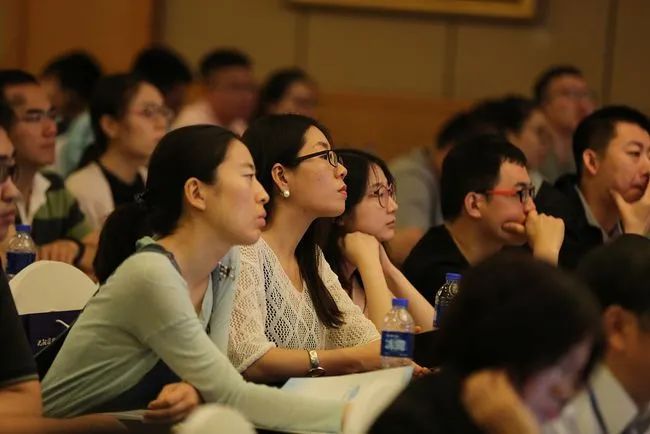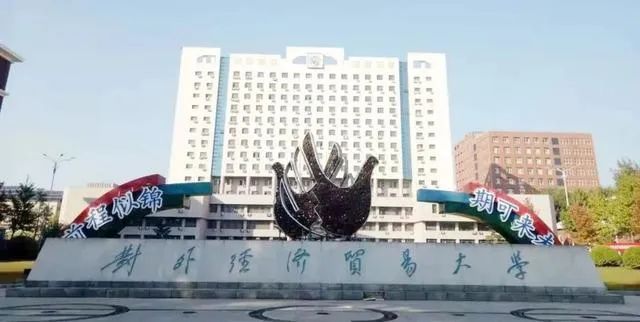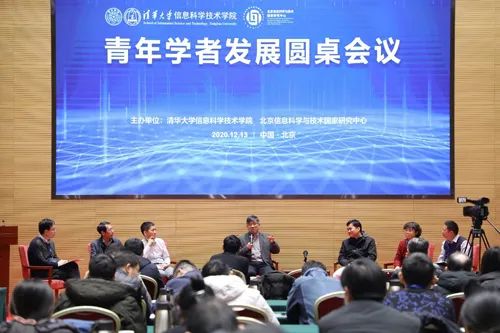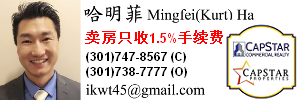“非升即走”是高校之恶?龚炯教授:说这话的人不了解实情
来源:微信公众号“补壹刀”
6/10/2021
体面、舒适、轻松,是很多人对高校教师这一职业的印象。
过去一个相对普遍的看法是,在大学当老师,社会地位高,工作和收入稳定,孩子上学有保障,而且每年还有寒暑假,这几乎是存在于激烈社会之外的一片世外桃源。
但如今,这样的印象在被逐渐打破。
近来,对于“青椒”(高校青年教师)生存困境的讨论越来越多。有舆论把矛头对向了大学对于青年教师的“非升即走”选拔制度上(也就是在6年的合约期结束后如果不能升副教授就必须走人),认为这是对“青椒”的压榨,甚至是一种“高校之恶”。
“非升即走”是一种什么样的选拔机制?“青椒”群体的生存状况究竟如何?现在高校管理中存在哪些突出矛盾?
针对这些备受关注的问题,补壹刀连线了对外经济贸易大学经济系教授龚炯。
01
补壹刀:龚教授,能否先简单介绍一下您的经历?
龚炯:我叫龚炯,现在对外经济贸易大学经济系教授、博导。我是1995年在美国得克萨斯大学奥斯汀总校拿到经济学博士学位的,之后我先后在美国的两个研究所各工作了7年,然后在2009年初回到中国,成为一名海归。

我回国以后就进入贸大工作,也是跟学校签了一个6年的合同,6年之后也面临非升即走的问题。后来我合同到期,考核也通过了。2016年晋升为正教授。
02
补壹刀:针对社会上的一些热点问题,有舆论把矛头指向了制度层面,认为大学普遍施行的“非升即走”选拔策略,实际上是对“青椒”们的一种压榨,甚至有人称之为“高校之恶”,您怎么看这种说法?
龚炯:说这种话的人对大学制度不了解。大学不是咬人的地方,大学在本质上从事的是三方面的工作:教学、科研和社会服务,这三个方面一个都不可缺少。我想说的是,科研是少数最优秀的人才做的事情,大学的机制就是要把最优秀的人留下来。
我刚回国的时候也面临同样的压力,在这6年里确实压力比较大,工作也比较多。在6年过了之后,就是进入类似于美国tenure(终身制)的阶段,但我们跟他们不完全一样,在美国的话等于是得到一个铁饭碗,只要不犯特别重大的错误,理论上就算你什么都不干,也没人能把你赶走。但是我们这边呢,还是有一个考核机制,合同是三年一签,还是有科研要求,必须在达标以后才能保持原来的待遇。当然这个阶段的科研要求比开始那6年要轻松一些,比较容易达到。
我觉得“非升即走”这个制度是必需的,大学招进来的人,他是不是适合做科研,有没有能力做科研,是需要一个筛选机制的,如果没有筛选,是办不好一流大学的。指责大学筛选的人不了解大学的本质,大学本质就是求真,科研工作本来就不是所有人都能做的,必须是那些最有创造力、想象力,最有科研精神的人,最努力的人,才能留下来。

实际上,我认为“非升即走”是一种学术鼓励,鼓励你好好教学、科研和社会服务,如果这些做好了,你未来的工作会有保障。而且我觉得“非升即走”也是有道理的,科研人员在拿到博士学位之后的这6到12年里,是他人生精力最旺盛、创造力最强,也最容易出成果的时期,这是大部分人天然的生理规律。在他进入40多岁以后,各方面的状态都会稍微有点下降,在这个时候给你一个机制保障,能让你去专注于科研,我觉得是非常有道理的。
但是我也看到有人说,国内有些学校,招10个人最后留下来一个,这种情况我觉得比较极端,也很过分。大学人才的留用不应该完全从竞争的角度出发,应该有个稳定客观、长期一致的标准,如果10个都达标那就应该10个都留下来。以我自己的感受而言,我在贸大的同事,据我个人观察“青椒”能留下来的大概70%多,我自己也没有觉得很难,而且贸大的留用标准在同类院校比较的话,应该说标准还算比较高的。所以网上有些人说比例很小,这是不对的。
03
补壹刀:您刚刚提到对“青椒”的考核标准应该是稳定客观、长期一致的,现在的考核标准是什么样的?
龚炯:就说科研考核标准吧,现在各个院校对于考核没有一个完全统一的标准,各个学校有各自的A类B类C类核心期刊的单子,根据老师们在核心期刊上的论文发表进行算分。就我所在的经济学领域来讲的话,这个标准实际上是大致统一的,虽然每个学校自己的单子不一样,但是重合度很高,相同的部分至少有百分之八九十。
04
补壹刀:一些人提到大学招聘存在年龄限制,认为这是一种年龄歧视,给青年“学霸”们再套上一个枷锁,您怎么看?
龚炯:我觉得没有年龄歧视,一般来说35岁限制是说招进来的时间。一个人如果35岁还没有拿到博士学位,还是别做研究了。还有一个因素是,这跟各种申报的国家级、省部级青年项目有关系,从学校来讲,它希望青年学者申请课题,就需要满足这些要求,当然不能因此一刀切,但是一般性来说也没有太大问题。也有一些年龄特别大的人,在招聘的时候,如果他特别优秀,大家都是能看得出来的。我每年都参加招聘,基本上论文题目一看,这个题目是非常重要,还是说不太重要,大家心里都大致有个判断,然后再看一下论文,就能基本了解这个人的科研能力。

像我所在的贸大经贸学院是有一个教授委员会,在招聘青年教师的时候会根据他的教育背景、论文、成果、发展潜力等等来进行一个投票,总的来说还是很公正的。
05
补壹刀:是否存在“青椒”干满6年,仅仅因为编制不够无法晋升副教授,从而不得不走人的情况?
龚炯:这种情况,在贸大据我了解还没有,但是我听说过有这样的事情,就是有的大学编制已经满了,它的副教授、教授名额就只能有这么多,导致青年教师在晋升的时候,不是因为他本人的能力不行,而是因为没有名额,或者只剩下很少的名额,最后没有留下来。我觉得这是一些学校的制度性问题,如果编制不够,就不应该招那么多人。
06
补壹刀:这种情况跟现在大学扩招,博士生人数迅速增长是否有关系?
龚炯:确实扩招带来的一个结果就是博士生比以前多了,但是博士毕业未必就非要去大学任教不可,也未必非要做科研不可。我觉得还是要强调一点,科研是少数人的职业,真正伟大的科研成果都是少数人去做的。博士生可以做很多别的事情,比如考公务员、去公司、去研究院,等等。当然,也不是说博士出身就一定好找工作,这个也是分专业的,像我们这个专业就还好,但是其他一些专业可能情况就各不相同,我觉得也不要拿一些很个别的极端的例子,把它当成一个普遍现象。比如在美国的话,数学系就很难找工作。

而且也不是所有人都适合做科研。说实话,博士生出来后在大学的这6年,真的蛮辛苦的,这不是中国大学特有的现象,在美国也很辛苦,收入也不高。在美国,博士生的工资收入平均而言是比硕士生要低的。我想说的是,科研这条路其实是很清贫的一条路,当然它的好处是稳定、体面,我觉得对科研来说,更重要的是个人兴趣和对科研的热爱,如果你不热爱研究,怎么能出成果呢?根本就不应该来做教学、科研的工作。我一直都强调,不是所有人都适合做科研,大学是汇集最优秀人才的地方,是汇集愿意为求索求真努力奋斗的地方,不是养闲人的地方。
07
补壹刀:您刚刚提到科研是一条清贫的道路,您觉得作为学校,应该怎样为“青椒”提供支持和保障,能让他们安心做科研?
龚炯:“青椒”确实很辛苦。他们在科研和教学上有很多工作,学校至少要给他们一个体面的生活,让他们不要为了生计而去奔波。比如至少他们要有个住所,如果有小孩的话,是不是能去上个托儿所,就是在给他基本的生活方面的满足,他才能安心去做教学、科研工作。
08
补壹刀:您觉得现在突出的问题都在哪些方面?
龚炯:大学要有大学精神,要用人文的精神对待自己的员工,要善待科研人员和大学老师。现在一些学校会出现教职人员和行政人员产生矛盾的例子,这是不应该的。比如说老师们要去报销,结果财会人员的态度特别粗暴,一遍一遍地让老师们去返工,时间都浪费在贴发票上了。我觉得要对青年学者有人文关怀和基本的尊重,一定要让青年学者们有一个体面的生活。
我也听说有一些招聘时候给青年学者的承诺,在实际当中没有兑现承诺的事情。我觉得这种情况是不称职,必须严厉批评。我每年都参加招聘,我们贸大从来就是强调必须讲诚信,不能打埋伏,办大学不是开公司,学校跟员工打交道,跟读书人相处不能用做生意的方式来处理。一定要让年轻学者生活无忧,在科研上得到学院力所能及的支持。
09
补壹刀:除了科研压力,您觉得青年学者的生活压力大吗?
龚炯:我觉得在我们学校的话,要过一个体面的生活还是没有问题的,最近这几年大家收入增长还可以,学校也有一些奖励,还能有一些校外的额外收入,总的来说还可以。

但是在北京房子的问题很难解决,有些大学是自己有地有房,但是北京房价这么贵,地这么少,很多学校都是没有房子来卖给老师们住的。像贸大就是给青年教师们住房补贴,大部分的“青椒”都是在外面租房子住的,按照北京目前的房价,他们靠学校的收入是买不起房子的。所以我觉得学校也要考虑到青年学者们如果要成家立业的话,怎么去帮助他们,如果不能分房买房,是不是就在收入上给他们进行补贴,让他们没有后顾之忧。
10
补壹刀:现在大学里教授和“青椒”两极分化的情况严重吗?
龚炯:这个要看分化的程度,不同的学校情况不一样。一方面,教授和“青椒”在待遇上有差别天经地义,正教授通过自己的努力到达一个高度,也为学校做了很多贡献,收入上要高一些很正常。另外一方面,我想说,正教授的很多收入来自于国家课题,社科基金等,我觉得我们的评审机制应该要倾向于更多地把这些课题给年轻学者们,因为从科研的角度出发,我前面也讲了,他们才是科研的生力军,他们的精力、创造力等各方面都处于一个最容易出成果,最有爆发力的阶段。而现在社科、自科基金的很多课题更加倾向于给资深的学者,这实际上不利于国家的科技政策,也不利于我们整体科研水平的提升。
所以我觉得应该在导向上做点事,这不仅仅是为了给青年学者们提高收入。从成果本身的角度来说,应该给年轻学者更多机会,同时也能在经济上让他们更加宽裕一些。
(采访、整理:花叨叨)
北美 Faculty 申请小结
By Yutuo
02/26/2021
1. 实力永远是第一位的。需要有top的publication,但是实力未必体现在top journal/conference的数量上 — 0和1的差距往往要比1和10的差距大。越是top的学校,往往并不单纯的去看数量,而更看重工作本身的impact。一篇有1000个citation的工作可能比10篇100个citation的工作更有意义。如果用谈恋爱相亲做类比的话,这部分就相当于颜值,学历,财富等硬通货,但是具体怎么衡量综合实力,每个人的标准会略有差异,但总体上有一点,那就是只少得有一处吸引人的地方。
2. 运气也是非常重要的。你的方向是不是他们最需要的最感兴趣的,你和committee是不是投缘。这一点有点玄幻,就好像两个人的结合,虽然大体上讲究个门当户对,但是也绝非按照硬实力配对。这里需要讲的一个trick就是,如果research没有办法做的非常深入的话,那么也可以往广度发展,做交叉学科,这样做的好处至少有3个:
1) job talk的时候故事非常好讲,motivation会非常strong;
2) 由于是交叉方向,往往committee的人很难有人对你的领域完全理解,这也就为你创造了很多迂回空间,也不容易被人一眼看穿 — 增加一些神秘感是很有帮助的,尤其是在自己的硬实力并非无懈
可击的时候;
3) 投简历的时候选择面更宽,不一定限制在本专业。以我知道的CS PhD为例:最终去的department包括:Information Technology/System/Management/Engineering, Industry Engineering Electrical Engineering, Psychology/Neuroscience, Neural/Biomedical Engineering, Medicine, Radiology等等。其中不乏100+学校的PhD找到了top20的教职的例子。但如果找CS的faculty position,以目前人才的饱和程度看,则难如登天。
3. Interview。实力是短时间内无法改变的,运气是不可控的,interview就显得尤为重要,或者说,是最重要的一环。interview的准备工作网上都有很多完备的介绍,就不展开说明了。但是需要强调的一点,就是job talk时讲故事的能力。这里的重点,绝对不是为了表现你的工作以及你本人如何如何牛X,而是你的工作如何如何重要。如果他们觉得你不牛X,就不会邀请你做on campus的interview,所以这一点是无需证明的。同理,你也不需要秀你的专业技术 — 那些专业方面的奇技淫巧,不懂你研究的人是很难通过一个talk就get到的。而懂你研究的人并不是你的争取对象 — 他们是已经站在你这一边的人。你的重点是要争取那些不是很了解你工作的人,让他们get到的研究的重要性,以及让他们觉得未来他们可以跟你存在潜在的collaboration,你的到来会是对这个department很好的补充。绝大多数情况下,faculty search committee里面的人只有1-2个真正懂你的research,但是最终大家投票的时候是每人一票的。
具体到job talk,就是要尽量的简单易懂,最开始的几页slides要从一些人们日常有直观感受的内容(也就是大家都知道的事情)说起,例如可以搜一些新闻的headline来凸显这个问题的对于普罗大众的impact,然后再切入到自己的research topic中。当年做postdoc的时候,听过系里面的job talk,其中两个让我印象最为深刻,都是做optimization的,最让人印象深刻的是,一个如此mathematical的topic,两位candidates却极少用数学公式及证明,而是用了大量的图片和动画演示让听众理解其工
作的原理(现在此二人分别是Princeton和MIT的AP)。
另外一个问题就是,如果自己有多个工作,那么在job talk的时候,就要有主次。个人感觉,详细介绍的最好不要超过三个,而这三个工作虽然看似独立,但最好有一个主线串起来(类似于漫威系列的电影),而剩下的工作,则可以在talk最后简要介绍一下即可。
4. 申请文书 & Connection。前者网上有很多的sample,就不赘述了。而后者包含两部分:一部分是你老板的connection。在北美,相对于学校的reputation,大家更看重老板的名气(当然,前提是老板有名气)。记得当年系里面candidate过来面试的时候,教授们从来不是说,这个人是XX学校来的,而是说这个人是XX的学生。当然,老板的connection也是我们没有办法控制的。而自身connection,个人觉得,主要的渠道就是开会时的social,当然,也包括平时在自己系里面的social,尤其是低年级的时候,多跟高年级的师兄和postdoc聊聊,因为这些人说不定哪天就去其他学校当AP去了。另外一个渠道就是通过网络主动跟别人建立学术联系/合作,这种情况往往是起源于你对于对方工作的充分了解,当然这种需要自身有比较强的硬实力。这里想说的一点是,由于民族性格和语言壁垒的问题,大多数中国人并不擅长跟老外在公众场合打交道,尤其是在自己没有特别出色的工作发表的时候,往往羞于跟同行交流,生怕露怯。本人这一点其实也并不擅长,所以没有什么经验可谈。但想说的一点是,自己research的水平并不是关键,关键是有自信。我曾经不止一次见过组里的老外,把自己做的非常 incremental 的工作用非常骄傲的语气给别人present,明明仅仅是一个水会的poster,但是滔滔不绝的样子仿佛是CNS级别的工作。这一点,是十分值得学习的。
暂时就想到这么多,后续有其他idea的话再补充。
CAREER ADVICE
An Overview of the Faculty Job Application Process
By Academic Positions
02/26/2021
Applying for a faculty position at a North American university is a long process that requires several specialized documents and a lengthy interview process. Here’s an overview of the application process.
Timing
Academic jobs can be posted at any time, but many American and Canadian tenure-track jobs are posted in the late summer or early fall. Applications are then generally due in November and December. Shorter, fixed-contract positions like visiting assistant professorships or lecturerships are often posted in the spring.
Key Application Materials
For most faculty positions the following application materials are required:
- A cover letter– the cover letter presents overview of the applicant and shows why they are the right person for this position. An academic cover letter will cover the candidate’s research and contributions to the field as well as publishing plans, future projects, teaching experience, and specific interest in the department.
- A CV– A curriculum vitae lists the applicant’s academic qualifications, employment history, plublications, awards, grants, conference presentations, teaching experience, and service activities. Learn more about how to write an academic CV here.
- Recommendation letters– Most positions require three to five letters of recommendation from senior faculty who can comment thoughtfully on the applicant and their work.
In addition to a cover letter, CV, and recommendation letters there are several other documents that might be required as part of the application. These could include:
- a teaching portfolio,
- sample syllabi,
- a writing sample,
- a research statement
- a statement of teaching philosophy
First-Round Interviews
There will be several rounds of interviews for faculty positions. After reviewing all the applications, the search committee will create a shortlist of 15 to 25 candidates. In many fields, the first-round of interviews take place at the discipline’s national association’s annual meeting. Candidates might be asked to provide secondary material before the interview such as a writing sample. Conference interviews usually last 20-30 minutes and will take place in a hotel room, suite, or cubicle in the conference centre. If the field doesn’t conduct conference interviews, first-round interviews will be done over Skype. Regardless of the format, the candidate will be asked about things like their dissertation, publications, plans for future projects, teaching, and course development. After these interviews are complete, the search committee will narrow down the shortlist. The remaining candidates are then ranked by the entire department and the top three are flown out for individual on-campus interviews.

The Campus Interview
Each of the top three applicants will be invited to spend a day on two on campus. During this time, they will have several one on one meetings/interviews with the search committee, departmental faculty, the department head, and even the dean. Each candidate will give a “job talk” lecture on their research to the faculty, graduate students, and sometimes undergrads in the department. The job talk is followed by a Q&A and often a reception. Many campus interviews will also include a teaching demonstration, where the candidate will prepare a sample lesson for undergraduate students. During the visit, the candidate will get a tour of campus and also eat meals with members of the faculty and search committee.
Making an Offer
After the campus interviews are complete, the department will make its final decision. Once they get permission from the administration to make the offer, the chair will contact the successful applicant and offer them the position. The candidate will then receive the full offer letter and contract and the time frame to accept. If the candidate turns down the offer, the department may make an offer to their second choice candidate or there may be a failed search.
If the candidate accepts the offer, the chair of the search committee will contact the other finalists and let them know that the position has been filled.
Source: https://academicpositions.com/career-advice/an-overview-of-the-faculty-job-application-process
CAREER NEWS
Fifteen to one: how many applications it can take to land a single academic job offer
Survey finds that standard metrics of success can’t completely explain why some candidates get offers and others don’t.
02/26/2021

It takes at least 15 job applications to land a single offer, finds a survey of 317 early-career researchers who applied for faculty positions in a range of nations1. The results have shed light on a hiring process that is often opaque, frustrating and hard to predict. Contrary to common belief, the authors found that a publication in a high-profile journal isn’t an absolute prerequisite for a successful application.
The survey was conducted by members of the Future PI Slack community, a postdoctoral support group. They collected responses from researchers who had applied for faculty positions between May 2018 and May 2019. Respondents hailed from 13 countries, although 72% were from the United States; 85% were in the life sciences. Overall, 58% received job offers, significantly above the average from other studies, suggesting that successful applicants were especially willing to take the survey. Only 26% had an authorship credit in Cell, Nature or Science.
The survey tracked conventional metrics of success such as fellowships, citations and publications, and found that these measures were only modestly effective at predicting which applicants would get job offers. The authors tried to construct a flow chart to predict the applicants’ fate, but it was less than 60% accurate.
More is more
One clear lesson was that jobseekers shouldn’t skimp on applications. Those who submitted more than 15 applications landed substantially more on-site interviews than those who didn’t. They also received more job offers, but the correlation wasn’t so strong, suggesting that the shotgun approach to applications can go only so far. Jobseekers do better when they send applications that are precisely tailored to the position sought, says survey co-author Chris Smith, manager of the postdoc programme at North Carolina State University in Raleigh.
Publication in a high-profile journal helped an applicant’s cause, but it was no guarantee of success, the study found. Jobseekers who were first authors of a paper in Cell, Nature or Science received offers on 11% of their applications. For people who had no papers in those journals, the success rate per application was 2%.
The authors also polled 15 faculty members who had served on hiring committees to find out what makes an application successful. The results suggest that committees seek candidates who will be good colleagues and scientists, says the study’s lead author, Amanda Haage, a biomedical scientist at the University of North Dakota in Grand Forks. The committees looked at affability as well as at track records, she says.
Intangible assets
Recruitment of academics is more holistic than many think, explains Robert Bowles, a careers adviser at the Royal Society of Chemistry in Cambridge, UK. Applicants “tend to forget about the intangibles”, he says. “Publications and grants buy you a ticket into the lottery, but they are not going to win it for you.”
When asked for their general thoughts on the application process, jobseekers had a nearly universal negative outlook. Most were frustrated that they did not receive feedback on their applications.
But faculty members on hiring committees find it impossible to provide detailed feedback on all applications. All 15 surveyed said that they typically receive more than 100 applications per job offer; 10 said they usually get more than 200.
It’s just one more sign of a stark imbalance in academia. Jobseekers outnumber positions, and that disparity is expected to get worse in the wake of the current coronavirus pandemic.
In this environment, postdocs should keep in mind that unsuccessful applications do not mean failure, says biochemist Rosemary Bass, a careers adviser at the University of East Anglia in Norwich, UK. “We see people who think that making five applications and not getting an interview means that they are a reject,” Bass says. “The current situation is bringing home the difficulties of the academic job market to PhD students and postdocs in a way that we as careers advisers have not managed to previously.”
Source: https://www.nature.com/articles/d41586-020-02224-5









